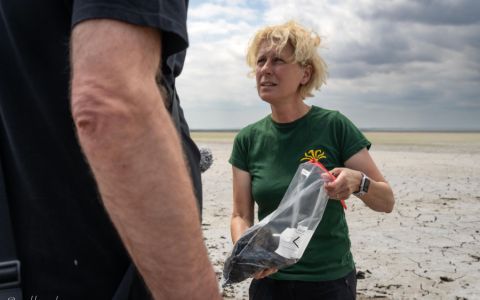Children's jackets and overalls sold in Europe contain extremely dangerous substances, warns a new study, conducted by a Czech NGO Arnika and the International Pollutants Elimination Network (IPEN). The most prevalent among the toxic "Forever Chemicals” found in children's outdoor clothing is the globally banned, exceptionally persistent perfluorooctanoic acid (PFOA).1 Researchers warn that PFAS presence in jackets carries a serious health risk despite the availability of safe alternatives.
Although the study also examined pieces of clothing from Asia and the United States, the highest levels of the persistent Forever Chemicals (PFAS) were clearly measured in jackets from Europe, with the jackets bought in the Czech Republic having the highest levels of globally banned PFOA. This is despite the fact that these substances can contribute to a wide range of insidious health problems and are considered potential carcinogens with a possible link even to childhood leukemia.
However, more complex PFAS (fluorinated polymers) continue to be used without any restriction. Authors of the study supported by scientific literature argue that such polymers degrade into PFOA. It is one of many reasons why PFAS need to be banned universally as a class without any exemptions, conclude researchers.
“PFAS are still widely used in textiles and people can be exposed to PFAS when they wear jackets and clothing. It’s especially troubling to find these substances in children’s products, since children may be even more vulnerable to PFAS exposures,” warns IPEN’s Global Researcher Jitka Straková, the lead author of the study.2
Download and read the whole study “Toxics in Our Clothing” HERE
From 32 children's jackets and overalls bought in Germany, the Czech Republic, Netherlands, Poland, the United Kingdom, Serbia, and Montenegro, more than a half had shown positive test results for individual PFAS or organic fluorine (EOF), which indicates a presence of PFAS.3 Nine of the jackets purchased in Europe showed results above the EU’s limits for the highly toxic PFOA and/or other chemicals from the wider group of PFCAs (perfluorocarboxylic acids) including perfluorodecanoic acid (PFDA), recommended for a global ban. A whole table with the specific results and information on the origin and commercial brands of the jackets tested can be downloaded below.
Unfortunately, it's not just children and other outdoor clothing users who are at risk from PFAS. Very few jackets and other textiles are recycled, so PFAS-treated clothing is likely to end up in landfills or being incinerated. These substances are extremely durable, so at the end of the garment's life cycle they will simply be released into the environment. Recycling does not directly solve the problem: PFAS are simply transferred to the new products.
An important footnote to the research is the inability to identify part of the present PFAS due to the lack of information from manufacturers and/or retailers and limitations of analytic standards. There are literally thousands of potentially hazardous chemicals of given type, making the lack of comprehensive global regulations even more worrying. Majority of PFAS are both of toxicological concern and persistent.
“As long as industry continues making PFAS and bringing false arguments about the safety of their subtypes, the health threats to our children and families will continue. We need a global ban on PFAS as a group to stop the continual uncontrolled environmental releases and human exposure – which is nowadays disturbing to say the least,” concludes Straková.
The study also suggests that the use of hazardous substances is far from necessary. 15 jackets from the European market showed no evidence of PFAS, meaning alternatives exist and are in use. Some of the outdoor clothing producers and retailers have even pledged to go completely, or at least partially PFAS-free. However, the researchers note that the study did not directly monitor compliance with these commitments and that the corporate responsibility also depends on the public interest - consumers, the media and policy makers.
Notes
[1] - PFOA: a summary
A synthetic substance with a long history. PFOA is a perfluorinated compound (PFAS), specifically one of the perfluorocarboxylic acids (PFCAs). PFOA's main advantage is its water-resistance, which led to its widespread use (i. g. for manufacturing fluoropolymers, used in various non-stick surfaces including Teflon or Gore-Tex) until it was abandoned due to its toxicity and environmental impact.
Women with higher blood levels of PFOA have been shown to have an increased risk of miscarriage. Children between the ages of 12 and 15 were more likely to suffer from attention deficit hyperactivity disorder (ADHD), and a later onset of puberty was observed at girls. PFOA interferes with hormone action and is therefore known as an endocrine disruptor.
Potential effects include effects on fatty acid transport and metabolism, cholesterol synthesis, oxidative stress and cytochrome P-450 (CYP)-mediated reactions. PFOA may cause liver, breast and thyroid cancer, and reproductive toxicity. The substance was made to be durable, so it does not degrade in the environment. It can be absorbed into the body by the oral route, inhalation and, to a lesser extent, dermally.
[2] - Children's vulnerability to PFAS
Chronic PFAS exposure in children is likely to be associated with a wide range of medical problems, including elevated blood cholesterol levels, dyslipidaemia (lipid imbalances linked to cardiovascular disease), slightly lower birth weight and reduced antibody responses to certain vaccines/infections. Children are more susceptible to PFAS due to lower body weight, differences in water and food intake, developing organ systems, breathing closer to the ground, and a longer lifespan during which toxic effects may manifest.
[3] - A brief summary of the whole testing
As there are numerous PFAS that can be used in products, two kinds of tests were performed. Samples were tested for 58 specific PFAS and for extractable organic fluorine (EOF), a measurement that correlates with the use of any PFAS. Highly dangerous PFOA was the most common PFAS in the products, found in 17 outdoor jackets. Another EU-restricted chemical, PFDA, was found in 17 samples.
Of the 15 PFAS identified, 6:2 FTOH was measured in the highest concentrations. The presence of FTOHs indicates that polymeric PFAS, i.e. side chain fluorotelomer-based polymers, were used in the products. Side-chain fluorinated polymers used in textiles degrade into other PFAS, including globally banned PFOA and other PFAS that are under current legislative scrutiny.
The project LIFE ChemBee (No. LIFE21/GIE/DE/101074245) is funded by the LIFE Programme of the European Union.Views and opinions expressed are however those of the project LIFE ChemBee only and do not necessarily reflect those of the European Union or the LIFE Programme. Neither the European Union nor the granting authority can be held responsible for them.








